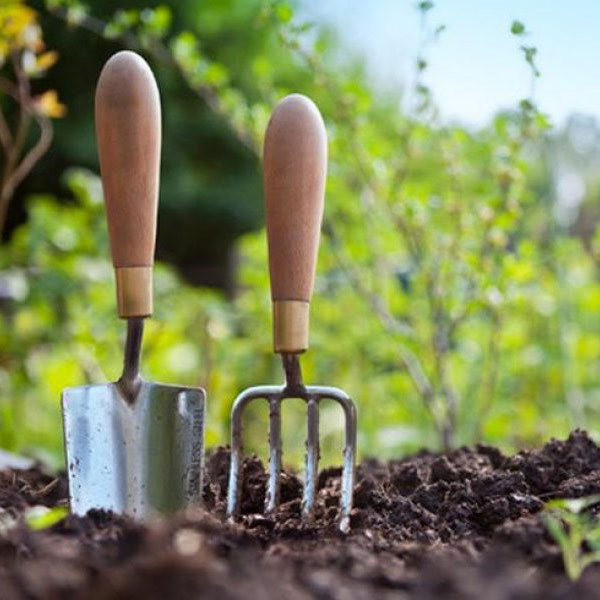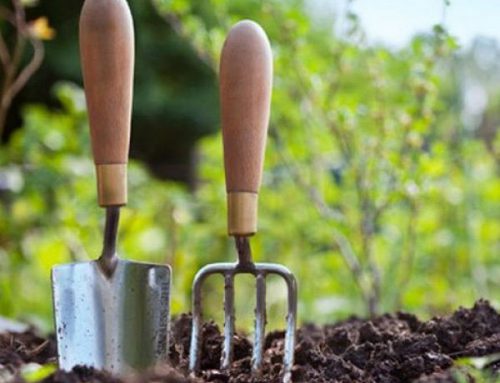Autumn planting
Autumn is nature’s natural time for planting. We have a wide range of hardy trees, shrubs, herbaceous perennials, roses and climbers in stock. Dig in plenty of compost, composted bark, tree & shrub planting compost or other bulky soil improvers, and add a slow release fertiliser, such as bonemeal, or a controlled-release fertiliser to the soil to improve root growth and fast establishment. Make sure all plants are well watered before and after planting.
Autumn lawn care
Liven up your lawn by removing the build up of dead grass, moss and other debris with a spring-tine rake or powered scarifier. Then aerate the soil with a hollow-tine aerator or garden fork and add a lawn top dressing. Then apply a granular autumn lawn feed or a feed, weed and mosskiller. Finally re-seed any gaps with the correct lawn seed mix.
Buy autumn planting bulbs
You can’t beat spring flowering bulbs for a splash of colour and now’s the time to plant them. Buy early to ensure the best choices from our extensive range – there’s something for everyone. To get the best from your bulbs, plant with compost, well-rotted manure or composted bark and a slow-release or controlled-release fertiliser and remember to label the planting position, so you know where they are.
Composting
Don’t throw away your spent bedding plants, kitchen waste and other plant material – turn them into valuable compost for improving your soil and mulching your beds and borders. Even those fallen tree leaves can be turned into leafmould. Making good compost and leafmould is easy with our wide range of compost bins, compost and leafmould accelerators, leaf rakes and collectors. Just ask if you need any help with successful composting.
Cuttings of summer bedding
Take cuttings from all your half-hardy bedding plants, such as fuchsias, bedding geraniums, marguerites and osteospermums, to ensure you have plenty of plants for next year. Take the cuttings just below a leaf, remove the leaves from the lower two-thirds of the cutting and dip the end in hormone rooting powder or liquid. Then insert the cuttings in pots of cuttings compost. Cover the pots with a polythene bag or put them in a propagator and place somewhere warm and sheltered. Don’t forget to pick up everything you need for successful cuttings, including pots, compost, dibbers, rooting hormone, labels and propagators.
Force bulbs for Xmas display
Now’s the time to buy your prepared hyacinth and other bulbs to guarantee flowers for Christmas. Plant them in pots or shallow bowls, leaving the neck of the bulb just exposed above the compost. Then place somewhere cold and dark for 10 to 14 weeks. They can be moved into the light and warmth when the flower buds start emerging. Remember to pick up your bulbs, bulb fibre or compost, pots and containers and labels to ensure beautiful bulbs for Christmas.
Greenhouse care
Greenhouses and cold frames should be prepared now ready for overwintering tender plants. Start by cleaning them with Jeyes Fluid. Then put up bubble wrap double-glazing to keep it warmer during the winter and to help cut fuel bills. Horticultural fleece can also be draped over plants to help provide a few extra degrees of frost protection. Check your heaters to ensure they’re in full working order or buy a more efficient replacement – and buy in plenty of paraffin or gas if you use these types of heaters.
Houseplant care
Now’s the time to give your houseplants some tender loving care. Most houseplants will need less water than in summer and you can stop feeding foliage houseplants. Autumn and winter-flowering houseplants will benefit from feeding with a high potash liquid fertiliser every 7 to 10 days. If your plants have been enjoying the summer outdoors bring them back inside before the weather deteriorates.
Make a new lawn
This is the best time to make a new lawn or replace one that is past its best. Good preparation is the key to success, so work over the soil incorporating compost or composted bark, rake and level the ground, walk over it to settle the soil, add some general granular fertiliser and rake again. After sowing the grass seed or laying turf, water well and keep the soil moist to ensure rapid establishment. Don’t forget to pick up all the products you need – or ask any of our staff for help if you need more advice.
Pest watch
As temperatures start to drop, outdoor pests become less active and diseases start to become dormant but you should still stay vigilant. Clearing away leaves and other debris will remove hiding places for pests. Fallen diseased leaves should be raked up and destroyed. Badly diseased stems and branches are best pruned away. The cooler, damper weather means that slugs and snails will become more active, so protect vulnerable plants with a suitable control or trap. This is also the last time you can treat plants for vine weevil grubs. Spray peaches and nectarines to help control against peach leaf curl. Indoors, pests and diseases will remain active. Early identification of a problem will ensure it doesn’t get out of control, so check your plants regularly for telltale signs. If your plants have a problem just ask one of our friendly staff to help you choose a suitable product to deal with it.
Plant baskets and containers for winter colour
To get the best displays from your winter and spring hanging baskets and containers, plant them up now. Plants to use include ivy, dwarf conifers and dwarf shrubs, winter-flowering pansies, hardy primulas and polyanthus. And add bulbs to extend the display. Check out our extensive range of plants, containers, baskets, basket liners, brackets and compost – and remember add a controlled-release fertiliser for best results.
Plants of the month
Keep your garden full of colour throughout autumn with our plants of the month. Choose from ericas, hydrangeas, potentillas, asters, echinacea, phlox, rudbeckias, hardy chrysanthemums, cyclamen and winter-flowering pansies. And remember those plants that are grown for berries, autumn foliage colours and the wide range of all year round evergreens.
Protect fruit trees
Now’s the time to apply grease bands around the trunks of fruit trees to prevent damage later on from wingless winter moths. Carefully rubbing off any loose bark will remove hiding places for other pests. To kill over-wintering pest eggs use Growing Success Winter Wash when all the leaves have dropped. Spray peaches and nectarines to help protect against peach leaf curl. Finally, always pick up all fallen diseased leaves and destroy them. If you need any more help on growing perfect fruit – just ask any of our plant staff.
September tidy up
September is a great time to make the most of your garden while the good weather lasts. Add extra supports to plants that have grown well during the summer, keep treating for pests and slugs – they don’t need to get any fatter! And it’s a great time to clean your paths and patios. Use path weed killers to clear weeds and specialist patio cleaning tools and products to clear moss and green algae.
Spring bedding
Plug any gaps in the garden with spring bedding plants. Chose from wallflowers, bellis daisies, forget-me-not, winter-flowering pansies, violas, hardy primulas and polyanthus. And remember to add some spring-flowering bulbs too. Just ask if you need any help in selecting the best types for your garden.
Summer bedding
For a splash of early summer colour next year, sow Californian poppies, annual poppies, godetia, larkspurs and a number of other hardy annuals now. Simply sow them where you want them to flower in soil that has been improved with compost or composted bark.




Leave A Comment
You must be logged in to post a comment.